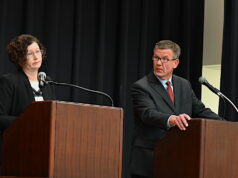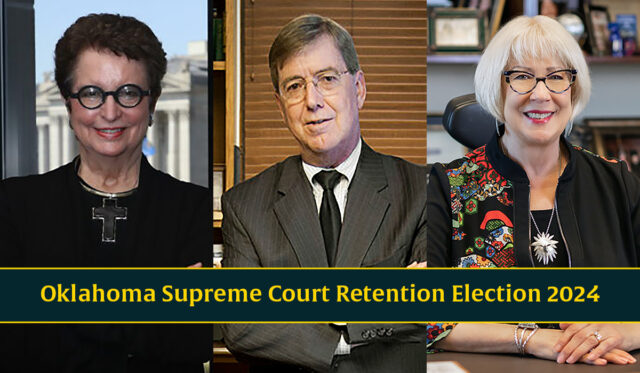
Voters will decide whether to retain Oklahoma Supreme Court Justices Noma Gurich, Yvonne Kauger and James Edmondson on Nov. 5, with conservative groups campaigning for their ouster while tribal leaders and a Democratic PAC urge their retention.
Traditionally, judicial retention elections receive little attention during statewide elections, and no judge has ever lost a retention vote in state history. Since the U.S. Supreme Court decision in Dobbs v. Jackson Women’s Health Organization struck down the federal fundamental right to abortion access, state courts have been left to determine if — and to what degree — state constitutions protect a right to abortion access. After several high-profile legal cases, judicial races across the nation are drawing more attention — and money — than before.
All three Supreme Court justices up for retention this year have long careers in Oklahoma’s third branch of government. Each was appointed to the Supreme Court by one of Oklahoma’s last two Democratic governors, and — like a majority of the court — each is over the age of 70. A legislative attempt that would have forced both Edmondson, 79, and Kauger, 87, to retire for being over the age of 75 failed earlier this year, as did an attempt to eliminate the Judicial Nominating Commission, a 15-member commission tasked with vetting judicial nominations since the 1965 Oklahoma Supreme Court scandal. Oklahoma’s retention elections originate from the judicial reforms of the 1960s, prior to which appellate judges were elected in partisan elections.
In addition to the individual fates of Edmondson, Gurich and Kauger, all Oklahoma voters are being asked Nov. 5 whether to retain certain judges on the Court of Criminal Appeals and Court of Civil Appeals. If any justice fails to receive a simple majority of support and loses their retention election, the Judicial Nominating Commission will take applications for the open position and narrow the candidates down to three finalists from which Gov. Kevin Stitt would choose the replacement.
Justices respond to ‘No’ campaign
Launched Oct. 1 by a PAC called People for Opportunity, a television advertisement is accusing Edmondson, Gurich and Kauger of being “activist liberal judges.” The ad encourages a “No” vote on the justices and says they were appointed by the “unelected, liberal Judicial Nominating Commission.”
While attorneys can debate the characterization of the justices’ records, the JNC’s membership is prescribed by state law. Six of the JNC’s members are elected by fellow attorneys in the Oklahoma Bar Association, and eight are currently appointed by Stitt and Republican legislative leaders, who must select an equal number of Democrats and Republicans to encourage non-partisanship. A final JNC member is elected by other members of the commission, and no member may serve consecutive terms.
More information
The Oklahoma Bar Association has launched a website containing details about the 2024 retention elections.
While the ad says Edmondson, Gurich and Kauger have been “killing commonsense lawsuit reform,” it makes no mention of the Oklahoma Supreme Court’s Oklahoma Call for Reproductive Justice v. Drummond trilogy, a trio of cases that recognized a limited right to abortion to protect the life of the mother under the Oklahoma Constitution and struck down the state’s strictest anti-abortion measures. Edmondson, Gurich and Kauger each sided with the majority in the cases.
While conservatives have criticized those rulings, a recent string of election losses by anti-abortion campaigners across the nation — including neighboring Kansas — may have cautioned the justices’ critics against making abortion jurisprudence the centerpiece of the retention election. (Even though the Oklahoma Constitution protects a limited right to an abortion, there are no abortion clinics in the state.)
Two of four listed board members of the People for Opportunity PAC work for the Oklahoma Council of Public Affairs — Jonathan Small and Trent England — and OCPA’s judicial scorecard gives all three justices up for retention failing grades. The conservative think tank is a frequent critic of the court, with its highest grade for a justice being a “B” for Dana Kuehn, the court’s newest member. (Kuehn’s scorecard indicates she lost a perfect OCPA score by authoring Ritter v. State, a decision that struck down a law banning schools from instituting mask mandates without the governor issuing a state of emergency.)
Dave Bond, another OCPA employee who said he is the spokesman for People for Opportunity, said Oklahomans “have not typically had any info to look to when deciding how to vote in judicial retain-or-remove elections.”
“A lot of Oklahomans are surprised and interested to learn that the three justices on our state Supreme Court who are on the ballot this November were all appointed by Democrat governors and have a long, liberal record of legislating from the bench,” Bond said when asked about his organizations’ motivations. “If Oklahomans want to make a change and no longer have liberal, Democrat-appointed justices on our state Supreme Court, all they have to do is vote ‘No’ on Yvonne Kauger, ‘No’ on James Edmondson and ‘No’ on Noma Gurich.”
While the “No” campaign against the justices is in full swing, none of the three appears to have registered a campaign committee to support a “Yes” vote, although Gurich does maintain a personal website. Historically, justices do not campaign for retention, with some citing provisions of the Code of Judicial Conduct as hampering their ability to campaign.
Another PAC called Protect Our Freedoms LLC, which lists only a Nichols Hills mailbox as identification, has distributed mailers urging support of the three justices up for retention. The PAC’s messaging focuses on the Supreme Court’s June ruling that a proposed religious charter school is unconstitutional. The mailer displays a picture of Superintendent of Public Instruction Ryan Walters and says he “schemed to illegally send your taxpayer dollars to private religious schools.”
“Thankfully, our Supreme Court stopped him,” the mailer states. “Vote yes to keep our justices! Vote yes to stop radicalism!”
Meanwhile, the Inter-Tribal Council of the Five Tribes officially endorsed the retention of the three Supreme Court justices Oct. 18. The action is particularly notable considering Stroble v. Oklahoma Tax Commission — a case that asks the court to declare whether tribal citizens who work for their tribe and reside within Indian Country reservation boundaries are exempt from state income taxation — has been pending before the Supreme Court since oral arguments in January. If justices rule in favor of Alicia Stroble, a Muscogee Nation citizen, it could reduce state income tax collections by about $70 million and spur further conversations about whether state income tax should be eliminated altogether. (All of the Five Tribes have filed amici curiae briefs supporting Stroble and opposing the state.)
In preparing this story about the Supreme Court retention elections, NonDoc emailed four questions to each of the justices. While some of their answers are included in their sections below, their entire answers can be read here.
Asked their reaction to the “No” campaign, both Kauger and Gurich said the campaign threatens the court’s independence.
“The retention system was designed to prevent corruption after the Supreme Court scandals, and to remove politics from the election. It has been an excellent system for decades,” Kauger said. “Nevertheless, it leaves us helpless to defend ourselves. I am saddened and alarmed that the system is being used to attack the independent judiciary based on dissatisfaction with a few specially selected opinions.”
Gurich encouraged voters to ask who would appoint the justices’ replacements. That would be Stitt, and if all three justices were removed, the subsequent replacements would make the court comprised of two-thirds Stitt appointees.
“Those engaged in misleading the citizens of Oklahoma by sound bites and mudslinging are attempting to destroy a nonpartisan judiciary in favor of judges who will decide cases based upon a political agenda,” Gurich said. “The independence of the judiciary is at stake. Voters should ask the question — who will be picked to replace me? Someone who has worked hard and dedicated their life to public service, or a pure-politician who will do the bidding of the executive branch?”
Edmondson said his reaction to the “No” campaign was “wonderment.”
“What is wrong with honoring our Constitutions? Their Preambles — Federal and State — fairly describe my personal political ideals,” Edmondson said. “I hope that voters would be interested in reading the cases behind the labels. The opinions of the courts are readily and freely available online at oscn.net.”
Presented alphabetically, the following sections provide biographical and jurisprudence background on the justices up for consideration Nov. 5.
James E. Edmondson
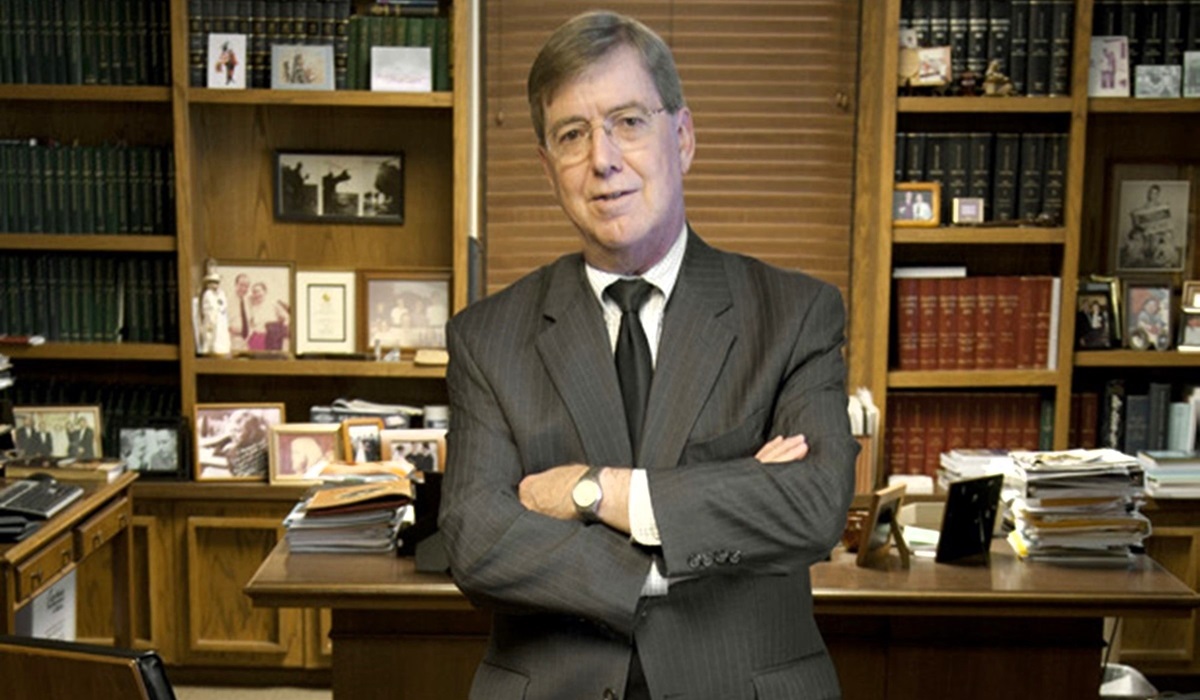
Age: 79
Hometown: Muskogee, Oklahoma
Law school: Georgetown University
Recent majority opinions: Spencer v. Nelson (held that a government agency which delayed producing records for 318 days could not benefit from the one-year statute of limitations in the Oklahoma Governmental Tort Claims Act because of the discovery rule); Independent School District No. 12 v. Oklahoma (held that local school boards had the power to determine which books meet community standards for school libraries).
Edmondson was appointed to the state’s highest civil court in December 2003 by Gov. Brad Henry. From a prominent political family, he started his legal career after two years in the U.S. Navy, first as an assistant district attorney in 1976 in Muskogee County under then-District Attorney Mike Turpen before working as an assistant, and later acting, U.S. Attorney. In 1983, he was appointed by Gov. George Nigh as district judge for Muskogee County and won reelection there until his appointment to the Supreme Court.
“I seek continued service on the Supreme Court of Oklahoma, fully hoping to complete another term if retained, inspired to do so by the pure joy of sharing in the wisdom of the eight extraordinary justices of this Court, helping the dedicated judges whom we serve, and resolving some of the problems that are encountered by our public citizens who are our ultimate trust,” Edmondson told NonDoc.
This year, Edmondson was the only partial (albeit unwritten) dissent in the unsuccessful appeal of a public nuisance claim brought by survivors of the Tulsa Race Massacre. He was also the only justice to vote for the survivor’s petition for a rehearing in front of the court.
The day before being the odd-justice out in the court’s Tulsa Race Massacre decision, the court also released a unanimous opinion written by Edmondson that held local school boards have the legal authority to control what books appear in local school libraries. He also authored another unanimous education-related decision in 2022 that approved the State Department of Education’s takeover of Western Heights Public Schools in July 2021.
Edmondson joined the narrow majority of justices who held that the Oklahoma Constitution protected “an inherent right of a pregnant woman to terminate a pregnancy when necessary to preserve her life” in Oklahoma Call for Reproductive Justice v. Drummond I. He joined the majority in two cases of the same name — OCFRJ v. Drummond II and OCFRJ v. Drummond III — which struck down several of Oklahoma’s strictest abortion laws.
In addition to deciding civil cases, the Oklahoma Supreme Court has “general administrative authority” over the entire state court system. Asked the biggest issues facing Oklahoma’s judiciary, all justices mentioned funding — an issue complicated by state courts’ loss of income from legal fees involving Native American defendants after the McGirt v. Oklahoma decision.
“Administrative issues in the state’s court system include speedy and effective case management by an adequate number of judges who are compensated sufficiently to wish to remain judges, who are equipped with modern technology to enhance their efficiency, and given the security necessary for the safety of their court proceedings,” Edmondson told NonDoc.
A member of the Edmondson family has served in political office somewhere in the state almost continuously since 1953, with the exception of a brief period when Edmondson and his brother ran a law firm together in the 1980s before the pair returned to public office. James Edmondson’s father was former U.S. Rep. Ed Edmondson, his uncle was former Gov. James Howard Edmondson (who controversially appointed himself to the U.S. Senate) and his brother is former Attorney General Drew Edmondson.
Noma Gurich
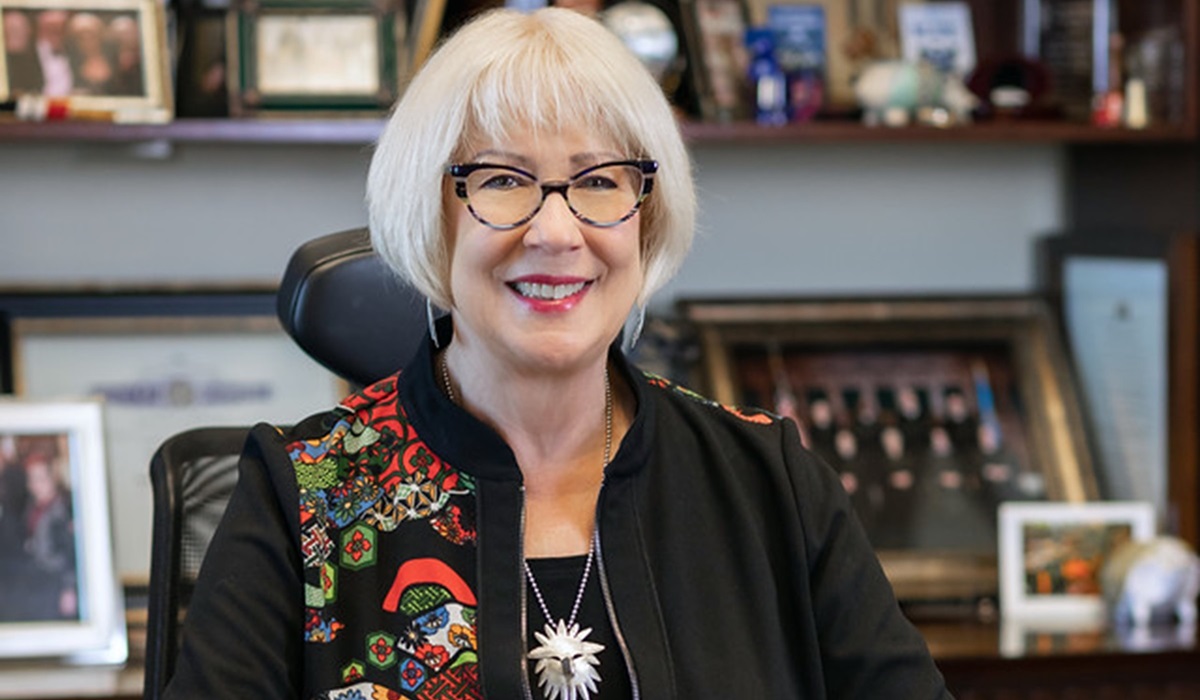
Age: 72
Hometown: South Bend, Indiana
Law school: University of Oklahoma
Recent majority opinions: In the Matter of the Estate of Evans (held that the Oklahoma Constitution’s homestead exemption preventing the “forced sale for payments of debts” of a family home only applied to a surviving spouse and minor children); Tulsa Ambulatory Procedure Center v. Olmstead (held that an illegality affirmative defense in contract law can be waived when the party fails to raise the defense in their initial filings, did not timely amend their filings and if substantial time has passed).
Gurich joined the court in February 2011 after she was appointed by Gov. Brad Henry. She moved to Oklahoma, her mother’s home state, in the 1970s to attend law school and has lived here since. In addition to being the only justice of the court raised out of state, she’s also the only justice appointed to Oklahoma’s courts by two different governors from each major political party. Despite the People for Opportunity PAC’s advertisement portraying Gurich as a Democrat-appointed judge, she had two prior appointments from Republican governors.
After Gurich worked in private practice for a decade, Republican Gov. Henry Bellmon appointed Gurich to the Oklahoma Workers’ Compensation Court in 1988, and she was reappointed in 1994 by Democratic Gov. David Walters. In 1998, Republican Gov. Frank Keating appointed Gurich as a district judge for Oklahoma County where she won reelection until her appointment to the Supreme Court by Henry.
Gurich, who plays saxophone, called serving on the Oklahoma Supreme Court “the greatest privilege, blessing and honor of my life.”
“Since 1988, I’ve dedicated my life to public service. I believe the foundation of our country is the Rule of Law. I took an oath to uphold the Constitution of the United States and the Constitution of Oklahoma,” Gurich told NonDoc. “My intention is to serve another six years. Besides my work at the Supreme Court, I will continue to mentor students in high school, college, and law school. It is important that they understand the importance of three separate branches of government, and why it is essential that Oklahoma continues to have an independent judicial system free from political control.”
Gurich said in her final year of law school, when no women served on the Oklahoma Supreme Court, she set the goal to become a judge and eventually serve on state’s highest court, even though it was “truly only a dream at that time.”
After Oklahoma’s 1960s court reforms, Gurich said her dream became obtainable.
“The merit based Judicial Nominating Commission with governor appointment took the politics out of judicial positions. This was important to applicants for judicial office as well as to the citizens of Oklahoma. Money was not a factor,” Gurich told NonDoc. “This was important to me as a person from a modest background. This selection system embodied the American dream—if you worked hard, developed a good reputation and were trustworthy and honest, you had an opportunity to pursue a career in the judiciary.”
In the three OCFRJ v. Drummond cases, Gurich joined the majority opinions that found the Oklahoma Constitution protected a limited right to an abortion to protect the life of the mother and struck down the state’s strictest abortion laws. Since her last retention election, many of the majority opinions she has written have focused on employment law, probate law and family law. In 2022, she authored two majority opinions rejecting challenges to State Question 818 brought by Tulsa resident Paul Tay.
Like Edmondson, when asked about the Supreme Court’s administrative role, Gurich cited funding as a major problem the state’s judiciary faces. Her answer hinted at the long delay Oklahoma has faced to achieve e-filing for court cases.
“For Oklahoma courts to move into the 21st century, there must be more funding for technology. The OSCN system is still considered one of the best in the country for gathering information, but we lag behind other states in terms of automation,” Gurich said. “We are dealing with a lack of court reporters throughout the state. In the past several years, we have encouraged colleges to create court reporting schools—currently OSU-OKC is the only public program.”
Yvonne Kauger
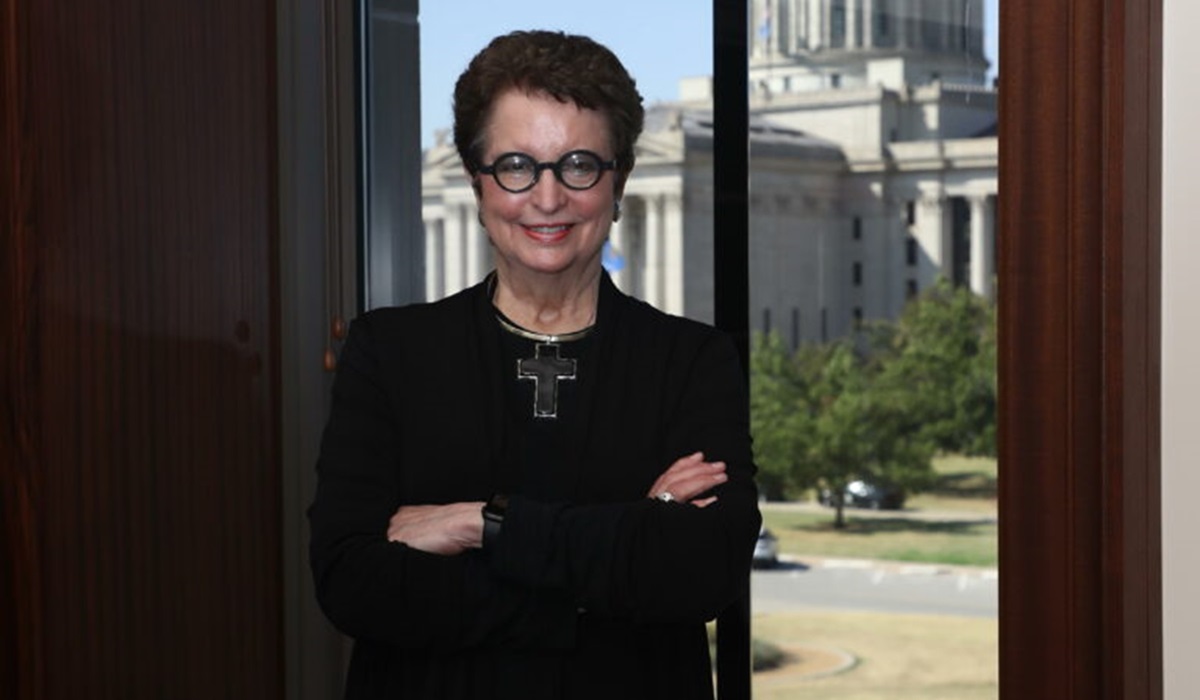
Age: 87
Hometown: Colony, Oklahoma
Law school: Oklahoma City University
Recent majority opinions: Cathey v. Board of County Commissioners for McCurtain County (held that a 2022 McCurtain County election was invalid for failing to follow a requirement that a ballot measure be published in a county newspaper for at least four weeks before an election); Jackson County Emergency Medical Service District v. Kirkland (held that medical districts in the state could be sued through their boards of trustees like county governments and that the Governmental Tort Claims Act applies to the districts).
Kauger was appointed to the high court in March 1984 by Gov. George Nigh, making her the longest-serving justice currently on the court. She is the third longest-serving justice to ever sit on the court behind Robert E. Lavender (42 years) and Denver Davidson (41 years). She started her legal career in 1969, and in 1972 she was hired as the first female staff lawyer for the Oklahoma Supreme Court by Justice Ralph B. Hodges.
She grew up on a farm in rural Oklahoma and told NonDoc that she is “still a farm girl morning person” who intends to serve another six years if retained.
“I am the first justice here every morning. I love my job, I am good at it, and I am not finished,” Kauger told NonDoc about her retention election. “Why would I retire from doing something I love so much to do something that is not nearly so interesting or satisfying?”
Despite being the oldest justice on the court, Kauger has been one of the more vocal justices during major oral arguments this year. She said “it sure looks like” the St. Isidore of Seville Catholic Virtual Charter School case was a “test case,” questioned the “quilt patch” jurisdictional implications of the McGirt v. Oklahoma decision for Oklahoma during a hearing on income tax jurisdiction in the Stroble case, and lamented that the Tulsa Race Massacre was never taught when she was in school. (Although, she later joined an 8-1 majority opinion rejecting the appeal of the last two survivors of the massacre.)
Last year, Kauger wrote two fiery — and polar opposite in length — concurrences in the Drummond trilogy. In the first, she wrote separately to detail how a woman’s right to terminate a pregnancy to preserve her own life in Oklahoma’s law predated other civil liberties, including her right to vote, her right to not be raped by her husband (prior to 1984 marital rape was not criminalized in Oklahoma), her right to open a bank account, her right to serve on a jury and her right to wear pants instead of a dress in state courts. In the second, she filed a three-sentence concurrence criticizing Chief Justice M. John Kane IV’s dissent.
“One of the dissents states: ‘Any analysis of an abortion statute that proceeds under the proposition that the life of the unborn is unworthy of consideration is defective,'” Kauger wrote. “Any analysis of an abortion statute that proceeds under the proposition that the life of the mother is unworthy of consideration is defective.”
Kauger was the second woman appointed to the Oklahoma Supreme Court and the only woman on the court between 1999 and 2011. She noted that if the “No” campaign is successful against her and Gurich, half of the women ever appointed to the court would be removed from office.
“Ninety-one justices have served on the Supreme Court since statehood,” Kauger told NonDoc. “Four of them have been women. If the no vote is successful, it would remove half of the women.”
Kauger served as chief justice from 1997 to 1998 and has the rare distinction of having been “adopted” by the Cheyenne and Arapaho Tribes in 1984, according to the tribes’ newspaper. She founded the Sovereignty Symposium in 1988, an annual conference in Oklahoma covering Indian law.
Read justices’ full responses to NonDoc’s questions












